Bathroom Workbook: 7 Elements of Craftsman Style
Craftsman homes dominated the American landscape in the first few decades of the 1900s. But the mix of wooden details with a minimalist Asian mind-set and the handcrafted quality embraced by the English Arts and Crafts movement got pushed aside by the midcentury modernists. That is, until the late 20th century, when the style saw a resurgence. Today many homeowners are scooping up Craftsman houses and restoring them to their former glory with the help of architects who’ve studied the style.
Joseph Metzler of Sala Architects is one such architect. He did his first Craftsman residence in 1990 and has made the style one of his specialties ever since. “It wasn’t something focused on in architecture school, but I felt I had an affinity for the style,” he says.
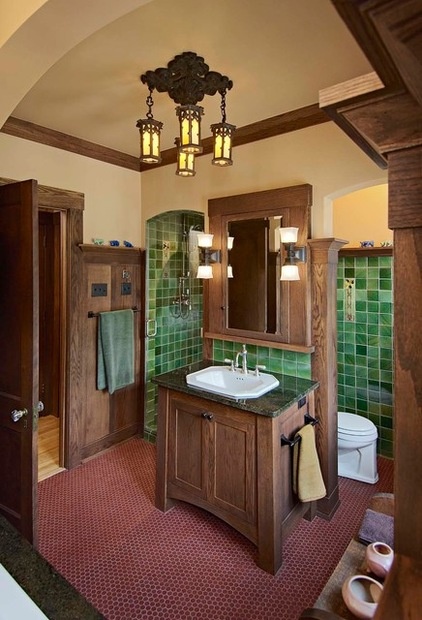
One of the hallmarks of Craftsman style, also known as American Arts and Crafts, is handcrafted tiles with beautiful glazes, which is why Metzler says the style is particularly well suited for bathrooms, like his design shown here. “There’s often more tile in the bathroom than any other room in a home. That’s why this style is such a natural in the bathroom,” he says.
Of course, when it comes to choosing a style for your bathroom, or any room for that matter, Metzler recommends taking cues from the existing home. (Most people wouldn’t have a traditional kitchen connected to a modern living room and a farmhouse-style dining room etc.)
But the great thing about Craftsman style is that most homes have adapted many of its elements over the years, making it an easy style to incorporate.
“I think so many houses have American Arts and Crafts elements and detailing because it’s a very popular style, and one that’s very easy to use for builders,” he says. “To me it’s a style that never really goes out of style. So if you’re looking to do something that doesn’t look dated, it’s a good direction.”
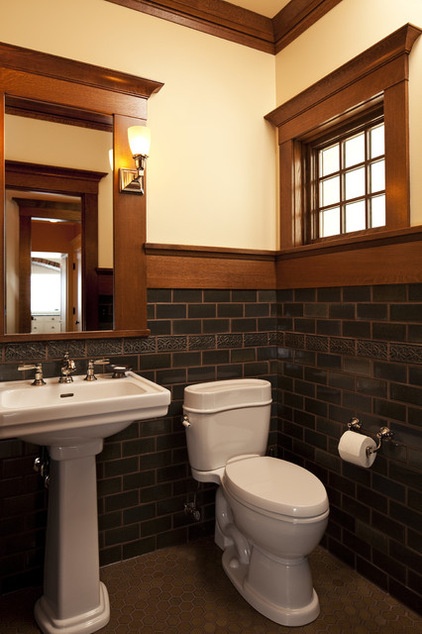
Elements of Craftsman-Style Bathrooms
1. Handmade tiles. Again, one-of-a-kind tiles are hallmarks of Craftsman spaces. Metzler says they’re an extension of the Arts and Crafts pottery movement. “These individual tiles were things of beauty,” he says. “You’ll often find them framed and hanging in homes today.” He recommends using highly glazed field tile with a few ornate pieces as accents.
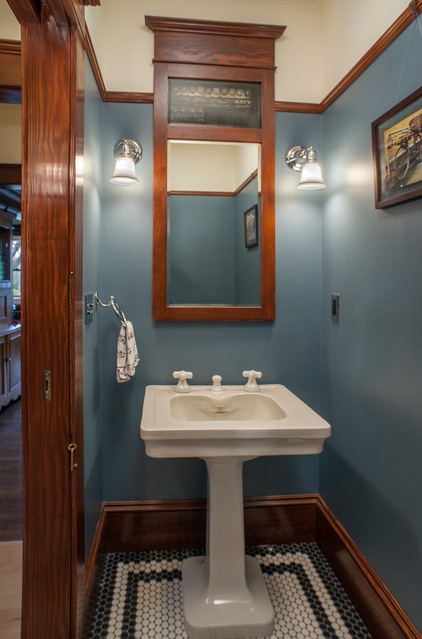
2. Dark stained wood. Molding and wooden trimwork, mirror surrounds and wooden vanities are all commonplace in Craftsman bathrooms. They go back to that handcrafted quality and use of natural materials. Wood was the preferred material in the Arts and Crafts movement, and many artists did amazing things with it. Just look at the Gamble House.
Roots of Style: Elements of Craftsman Design
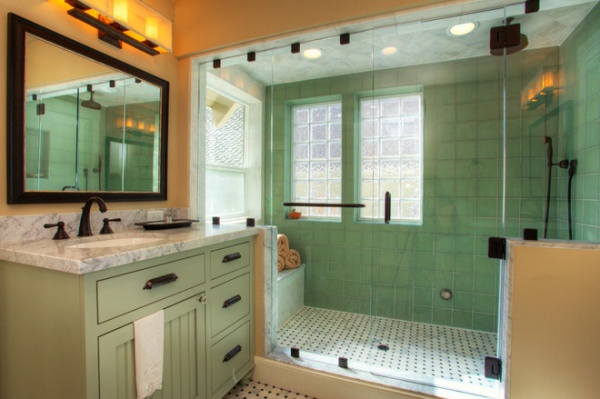
3. Focus on materials, textures and finishes. You won’t see a lot of ornate detail in Craftsman bathrooms or homes. Instead you’ll find a celebration of basic materials arranged in a rhythm or pattern. “The Arts and Crafts movement was about taking simple things and arranging them artistically,” Metzler says.
4. Shaker-style cabinet doors. You’ll see these a lot on furniture-style vanities. The flat-panel, nondetailed doors are something builder John Caufield, whose Craftsman-style bathroom is shown here, says are a must-include item in any Craftsman project.
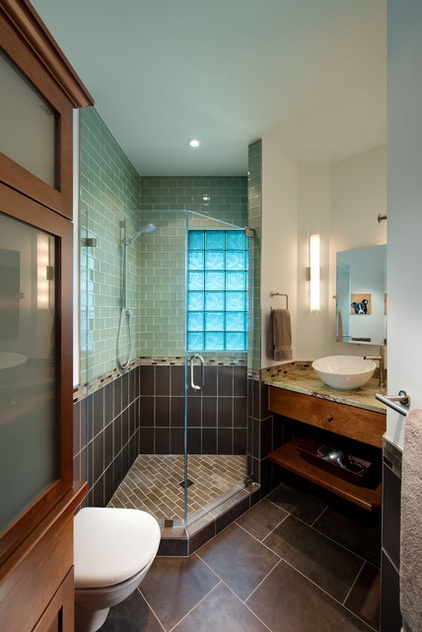
5. Green. It’s hard to say exactly why emerald green is so popular in Craftsman spaces, but Metzler again suspects it stems from the Arts and Crafts pottery movement. “Plus, it’s just such a nice complement to the dark woodwork,” he says. The color most commonly shows up in tilework in these spaces
6. Minimal accessories. Highlighting simple materials means keeping distraction to a minimum. That’s why you won’t find a lot of accessories in Craftsman spaces. In “Arts and Crafts or Prairie design, the architecture composition was decorative in and of itself,” Metzler says. “So you didn’t need to decorate with anything else.”
Because the style relied so heavily on skilled craftspeople, incorporating something handmade is important to honoring Craftsman history.
In this space designer Laura Lam of the Fisher Group included a single piece of custom drawer hardware on the vanity. “Instead of using accessories to create design feel, we let the materials speak for themselves through wood and personal touches from artisans,” she says. “You want to have that human element in Craftsman spaces.”
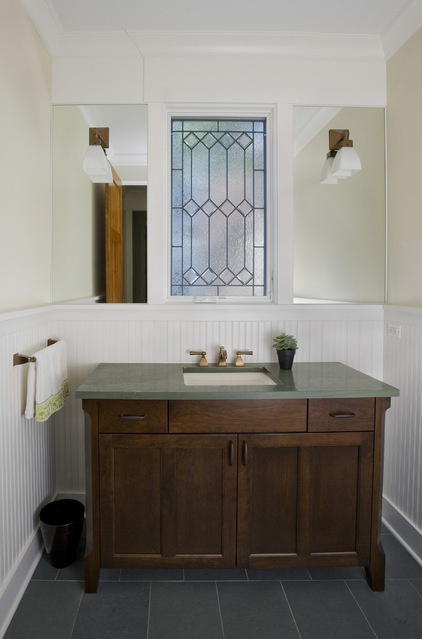
7. Patina. Soapstone or other natural stone countertops and brass or copper light and faucet fixtures that darken with age work well in Craftsman spaces, because they offer a slightly worn look that complements wood elements as well as the patina of the glaze on tiles.
“I think of Craftsman as being the antiglitz,” says Metzler. “Arts and Crafts is all about patina and picking materials that look soft even if they may not be.”
More:
See more Craftsman bathrooms
Bathroom Workbook: 12 Things to Consider for Your Remodel
Roots of Style: Elements of Craftsman Design












